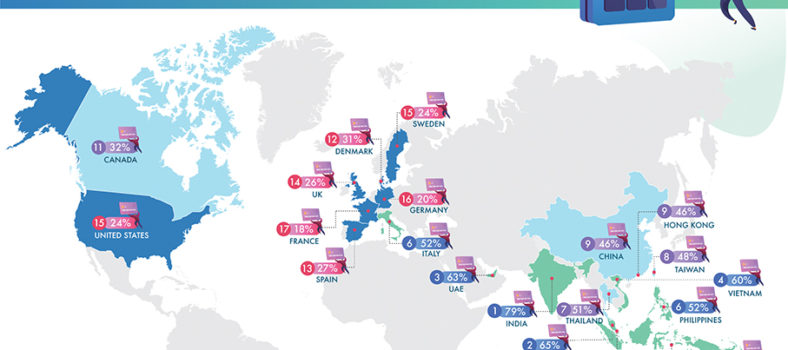By Staff + White Clarke Group
Open Banking is an emerging technology that can help you to grow your business by improving customer experience and retention while reducing operating costs. It aids in creating a straightforward and easy interactive digital experience for customers rather than simply presenting account balances.
Before we look at the practical applications, what is open banking?
Defining open Banking
Like other new technology concepts, such as Big Data and Machine Learning, there are various definitions for open banking. The explanation offered by Open Banking Limited (UK) is a useful starting point:
Open Banking is a secure way to give providers access to your financial information. It opens the way to new products and services that could help customers and small to medium-sized businesses get a better deal. Essentially, allowing other third-party companies to build software and processes utilizing customer financial information presents added value to your services as a banking provider.
So what could open banking contribute to your bottom line?
Use Case 1: Smart onboarding
Traditionally, onboarding new customers is a time and process-intensive exercise. Regulatory requirements to combat terrorism, money laundering, and fraud make the process even more expensive.
According to a 2020 article in the Banking Journal, “retail client acquisition in a physical, siloed world costs an average of $280, [while] shifting to digital onboarding reduces the cost to $120.” Open banking could reduce the cost and time required for account onboarding even further. Instead of asking customers to fill in dozens of form fields, open banking technology could allow customers to copy their information over from another service.
On the back end, Canada has started to introduce open banking via “interoperability of ID networks, like
Verified.Me and VON.” Similar ID technologies are also available in Germany, demonstrating examples of lenders using third-party services for verification purposes.
Smart onboarding is not a new concept, but open banking has the potential to make it faster and cheaper. Customers’ expectations for an easy, convenient experience accelerated in 2020, and lenders who move quickly to simplify account opening may gain an advantage over less sophisticated competitors.
Use Case 2: Faster payments
Lenders now have to contend with payment technology companies like TransferWise, Stripe, and PayPal, so being able to provide a fast, secure, and low-cost payment service to customers is critical.
Some experts in the field advocate for “instant payments”, which would represent a significant advance over wire transfers and cheques that take days to settle. However, the availability of such instant services varies from region to region. The Faster Payments system in the UK states that “payments are usually available almost immediately, although they can sometimes take up to two hours.”
Offering faster payments to customers benefit lenders in a few ways. First, delivering faster payments helps to distinguish your company from the competition. Second, offering faster payments helps banks maintain a high “share of wallet”, and discourages customers from switching to non-bank payment service providers like Apple, Google, PayPal, and Stripe.
Use Case 3: Accelerate credit and underwriting processes
According to the ABA Banking Journal, less than 20 percent of visitors to bank websites complete their applications. Complex credit and underwriting processes may contribute to this situation.
Open banking can speed up the credit process in a few ways, such as the potential to deliver better credit score insights and data. Experian Boost, launched in early 2019, gives individuals the opportunity to use open banking to read their credit history in more detail than traditional checks, taking into account payments such as regular bills, credit cards and phone contracts. It offers customers a better understanding of their creditworthiness and empowers them to improve their credit profile proactively.
For financial institutions, open banking can drastically accelerate the speed of the decision making process. By reviewing transactional data, rather than just the usual credit agency flags, lenders get a much better picture of a customer’s creditworthiness and risk level. This qualifies many applicants for finance that otherwise may not pass credit checks, as well as giving a more accurate data set on which products and deals to offer.
Use Case 4: Business and personal financial management
Low levels of financial literacy among personal and business borrowers are a significant challenge for financial institutions across many industries. In the UK, for example nine out of ten consumers feel that they are undereducated in terms of personal finance, according to research published in Business Insider. Without a basic knowledge of their financial situation, customers will struggle to manage their credit effectively and are more likely to incur debt or have more trouble paying it off.
Improving financial literacy starts with an accurate understanding of your current situation. That’s why personal finance digital services like M/int, which has 15 million users, and Personal Capital, which has an estimated 1.7 million users, have become popular.
The main obstacle for these services is that they often require bank login details to access information. This practice raises security questions — for example, if a banking customer hands over their online banking username and password to a third-party, you then have to question whether there are sufficiently robust cybersecurity protections to keep that data safe, and also what guarantees they have in place to assuage any customer concerns.
These services are not run by lenders, and customer loyalty to their bank may decline if they feel they are getting better financial insights and features from a third-party. It is also a critical reason for the surge in successful challenger banks in the past few years, such as Monzo, Revolut and Starling, which all offer clear insights for customers build around solid self-serve applications. Incumbent banks have been left to catch up.
It is worth assessing how third-party services make use of such features to develop ideas relevant to your own offerings. Similarly, you might consider adding new features to help your customers to visually understand their spending and indicate whether they are making progress towards their financial goals, such as a savings milestone or progress towards paying off loan.
The same capability also matters for small and medium-sized businesses that may lack a full accounting and finance team. You could present oversights dashboards to business owners to see all of their loans, savings, and other financial activities from one unified place, making the need for additional services platforms redundant.
Offering financial management services to customers in this way can improve customer loyalty by giving customers one-stop shopping for their financial information. Operationally, that also means less of a burden on service staff as more information is freely and directly available to customers.
What’s next?
Overall, the growth of open banking technology can help you to save time and money when you onboard new customers. It offers the type of speed that corresponds with same-day delivery expectations created by large retailers — a huge attraction for both new and existing customers — to create rich digital experiences.
As well as educating and assisting customers in meeting their financial goals, it also promises lenders faster verification and identity checks, more in-depth information available to underwriters, and a bigger picture of an applicant’s financial history and affordability.
White Clarke Group uses open banking as part of its customer direct module to empower our business customers, helping them to improve the quality of data they collect. The article is based on information from the firm.




